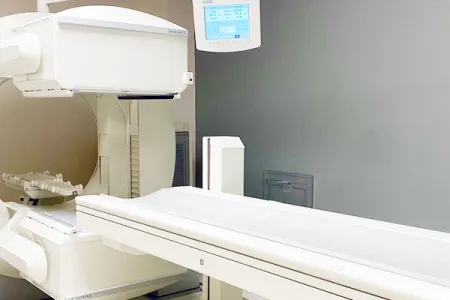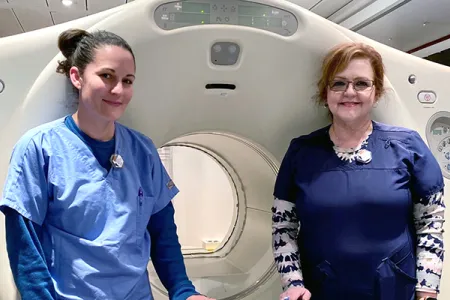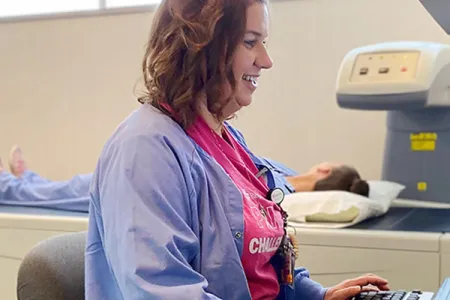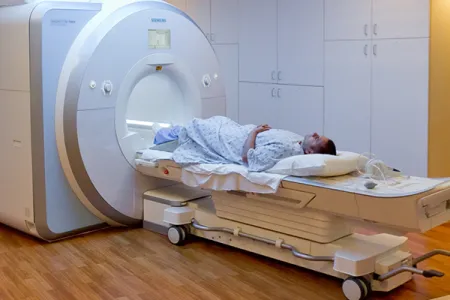Nuclear Medicine
What is nuclear medicine?
Nuclear medicine is an area of Imaging that uses small amounts of radioactive isotopes, or radiopharmaceuticals, to get pictures of a patient’s organ function and structure. Nuclear medicine exams are used to diagnose and treat many illnesses, including cancer, heart disease, bone issues, thyroid disease, gallbladder disease, or kidney disease.
PET/CT Exam
What is a PET/CT exam?
A Positron Emission Tomography (PET) and Computed Tomography (CT) exam combines two scans into one to create images with information about both anatomy and physiology. PET uses an injected radioactive isotope that is attached to a sugar molecule so it will collect in areas where the body is using sugar. These areas of activity may be normal or indicate disease, depending on where they are located. The CT portion of the exam is used to create images that help precisely locate where the areas of activity are within the body.
Ultrasound
What is ultrasound?
Ultrasound technology uses sound waves reflecting from the body’s tissues to create an image. The technologist directs sound waves from the transducer, an electronic device that converts energy from one form to another, into the body. In turn, the transducer detects any waves that were reflected back. The transducer sends that information to a computer, which turns the data into an image. Because ultrasound imaging does not use radiation, it is often used for infant and pregnancy imaging. However, it is also used to image many other parts of the body.
Bone Density
What is a bone density exam?
Bone density technology uses very low dose X-rays to measure the density of bones. The less density, the more likely a condition called osteoporosis results, which can cause bones to fracture too easily. The scanner measures the amount of X-ray able to penetrate through the bone, and uses that information to compute a bone density score.
MRI
What is MRI?
Magnetic Resonance Imaging (MRI) technology is an imaging test that uses a strong magnet and radio waves to produce detailed images of the organs and tissues in the body. Computers construct cross-sectional images, which are often called “slices.” These slices can be constructed in any plane and give the physician or provider detailed information about the anatomy in each specific location. There is no ionizing radiation involved in having an MRI scan.
MRI scans can help diagnose:







